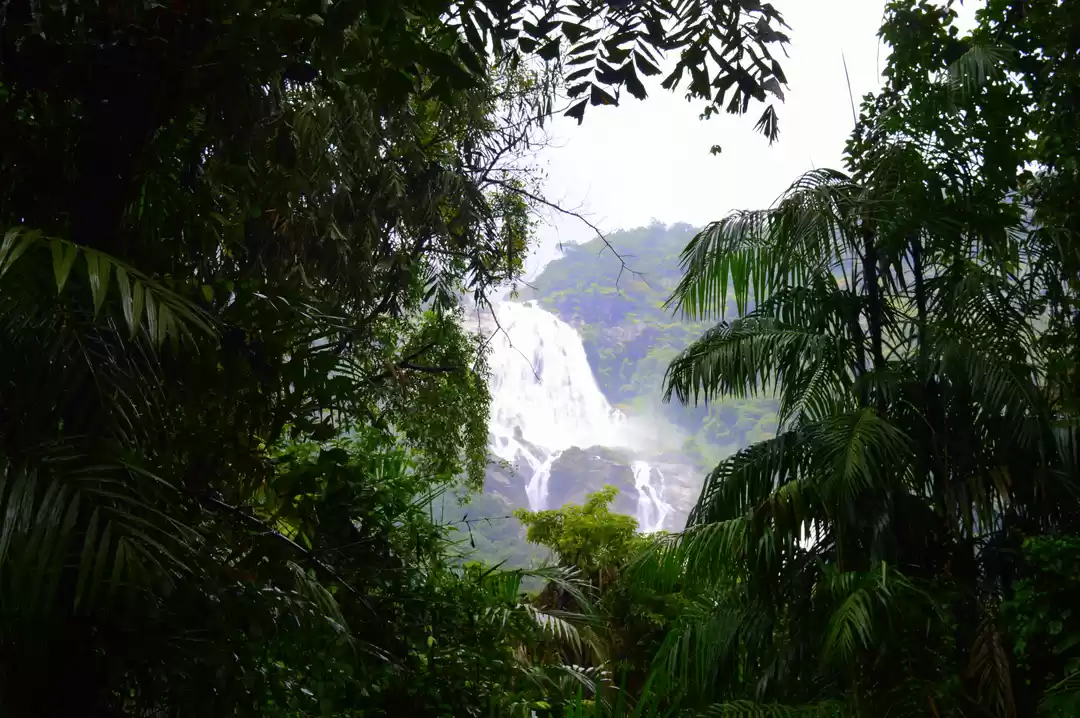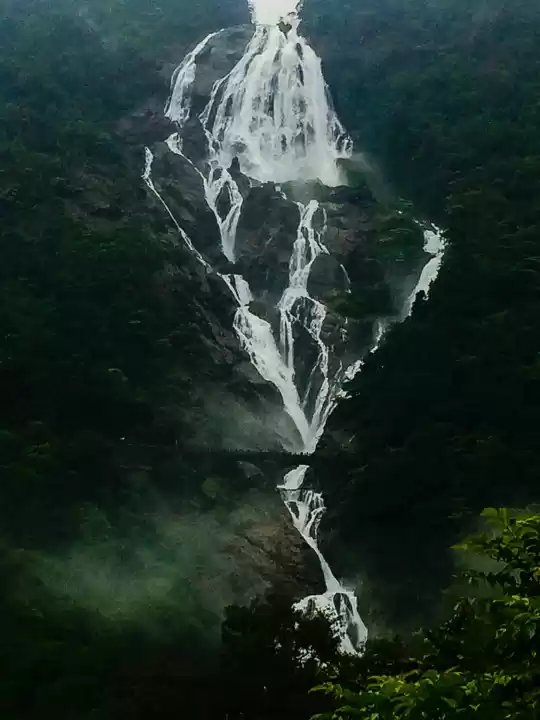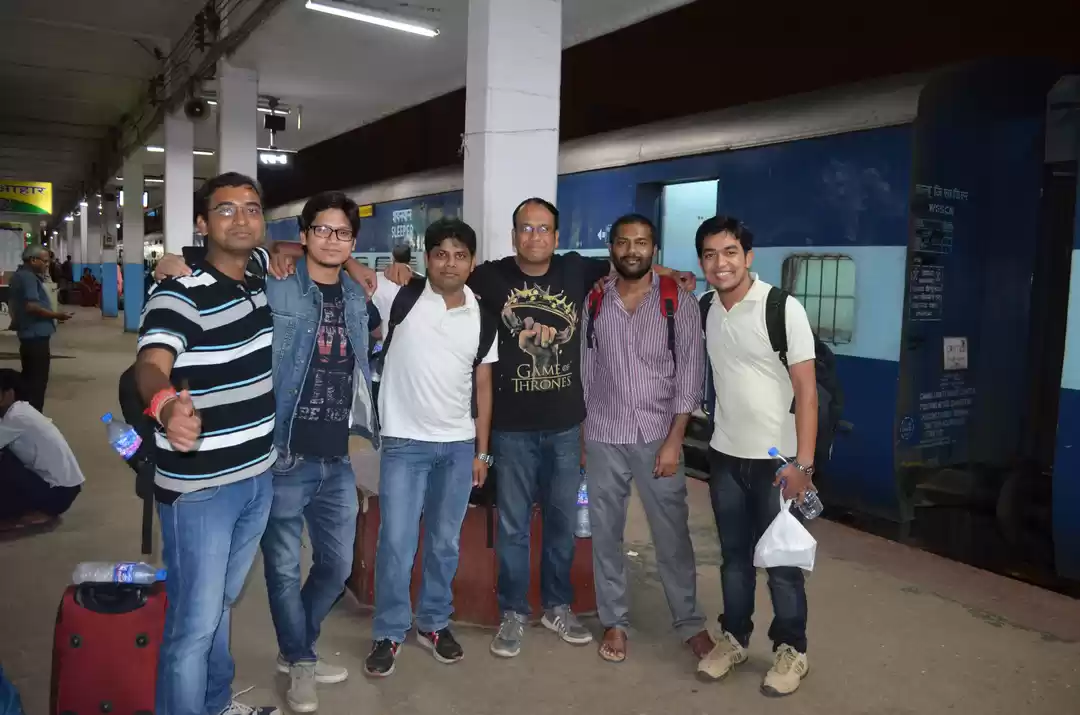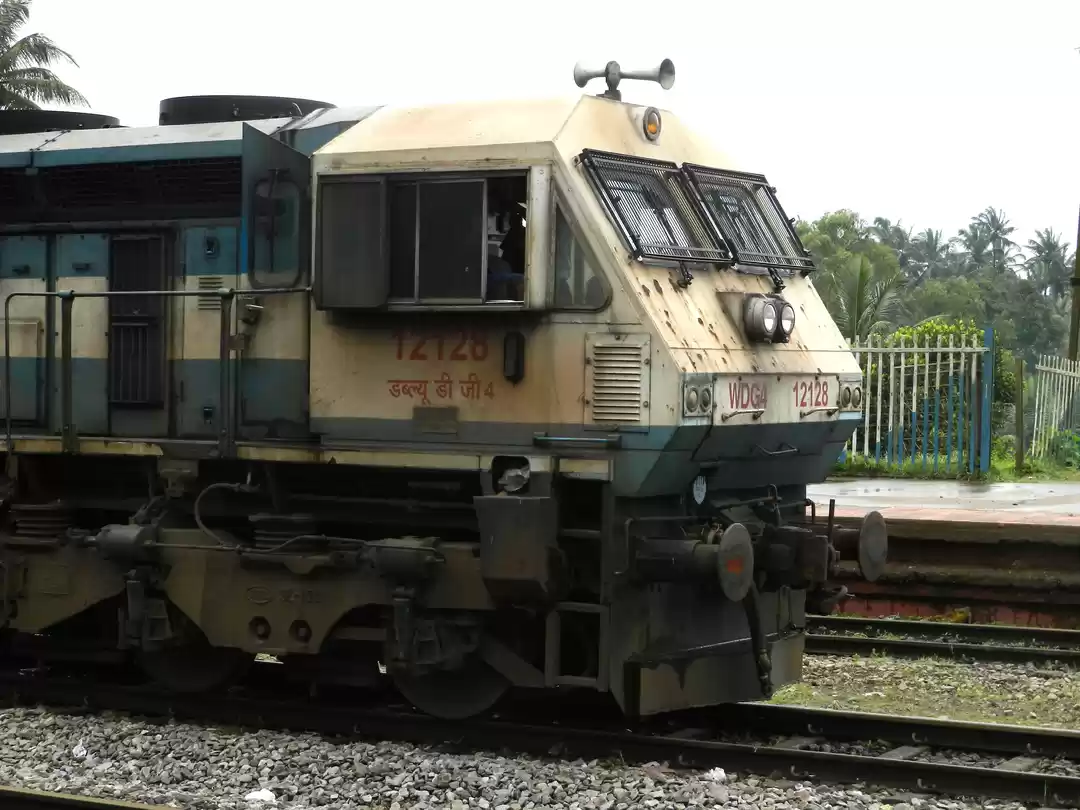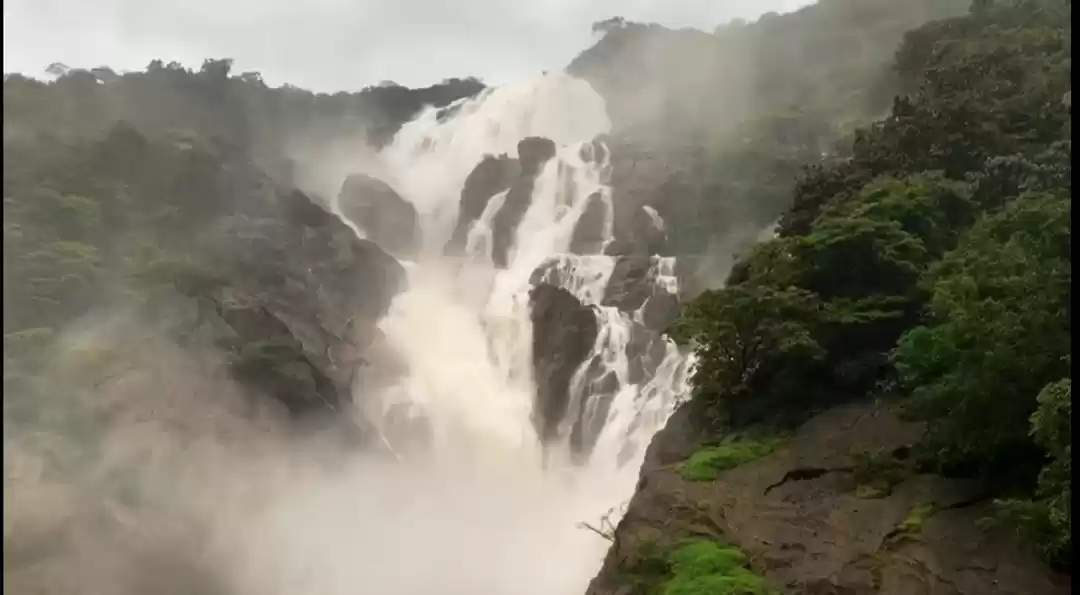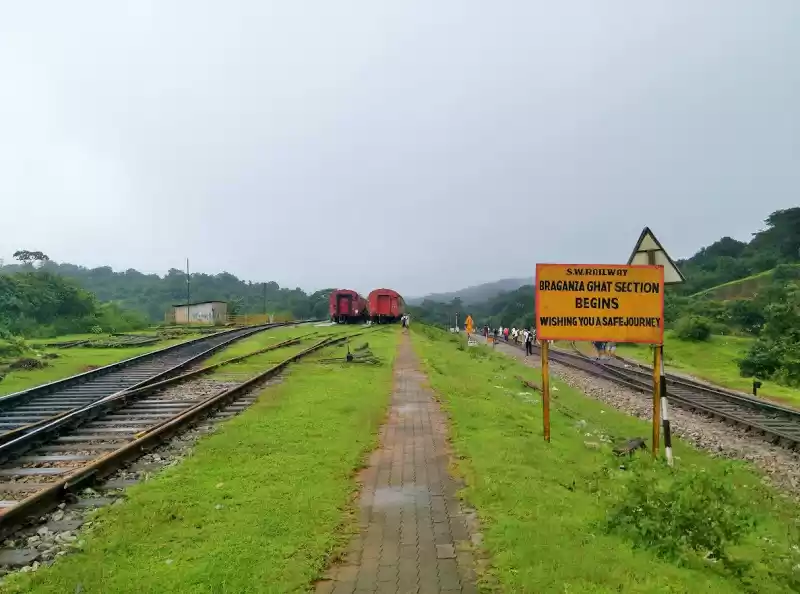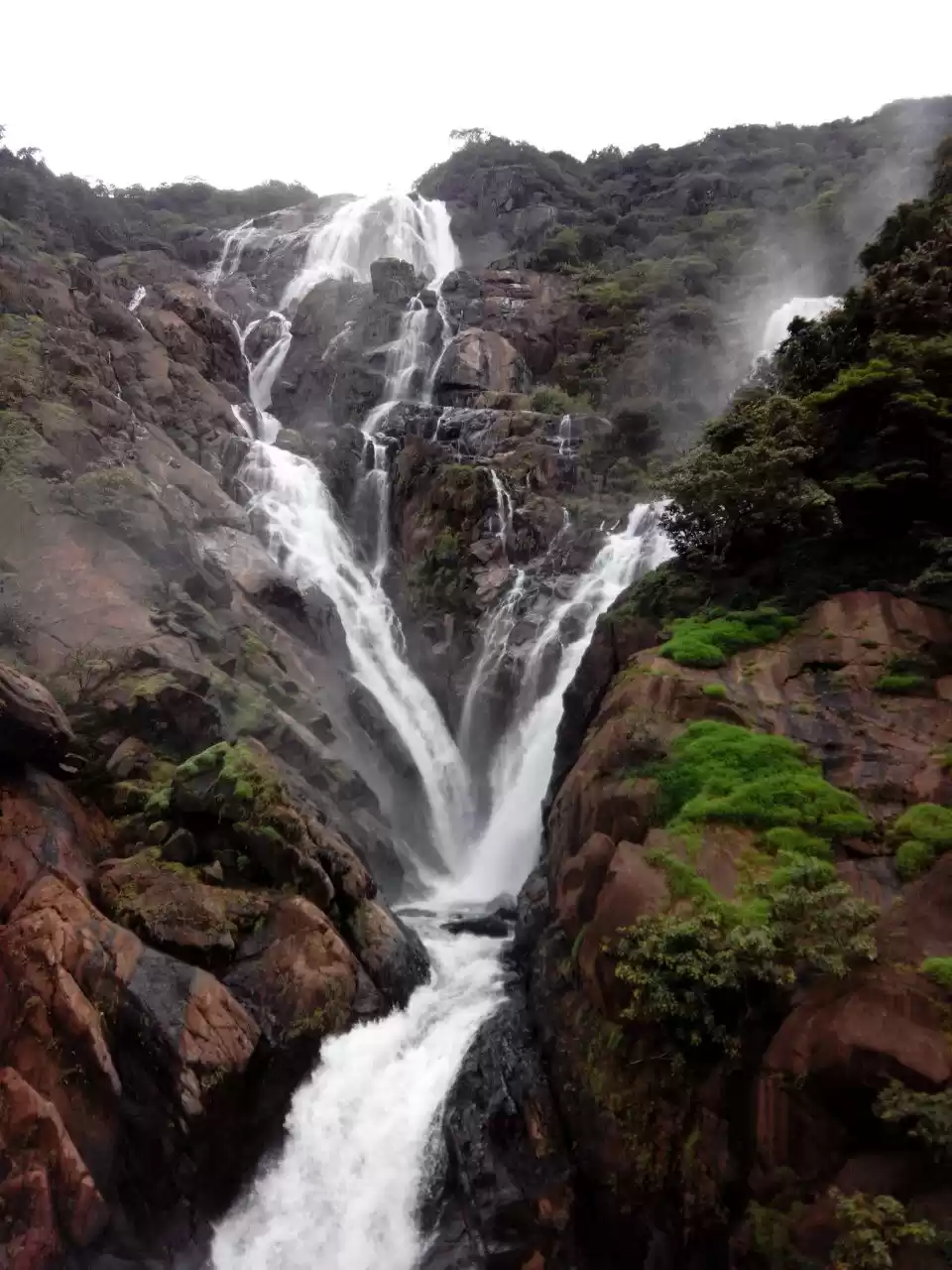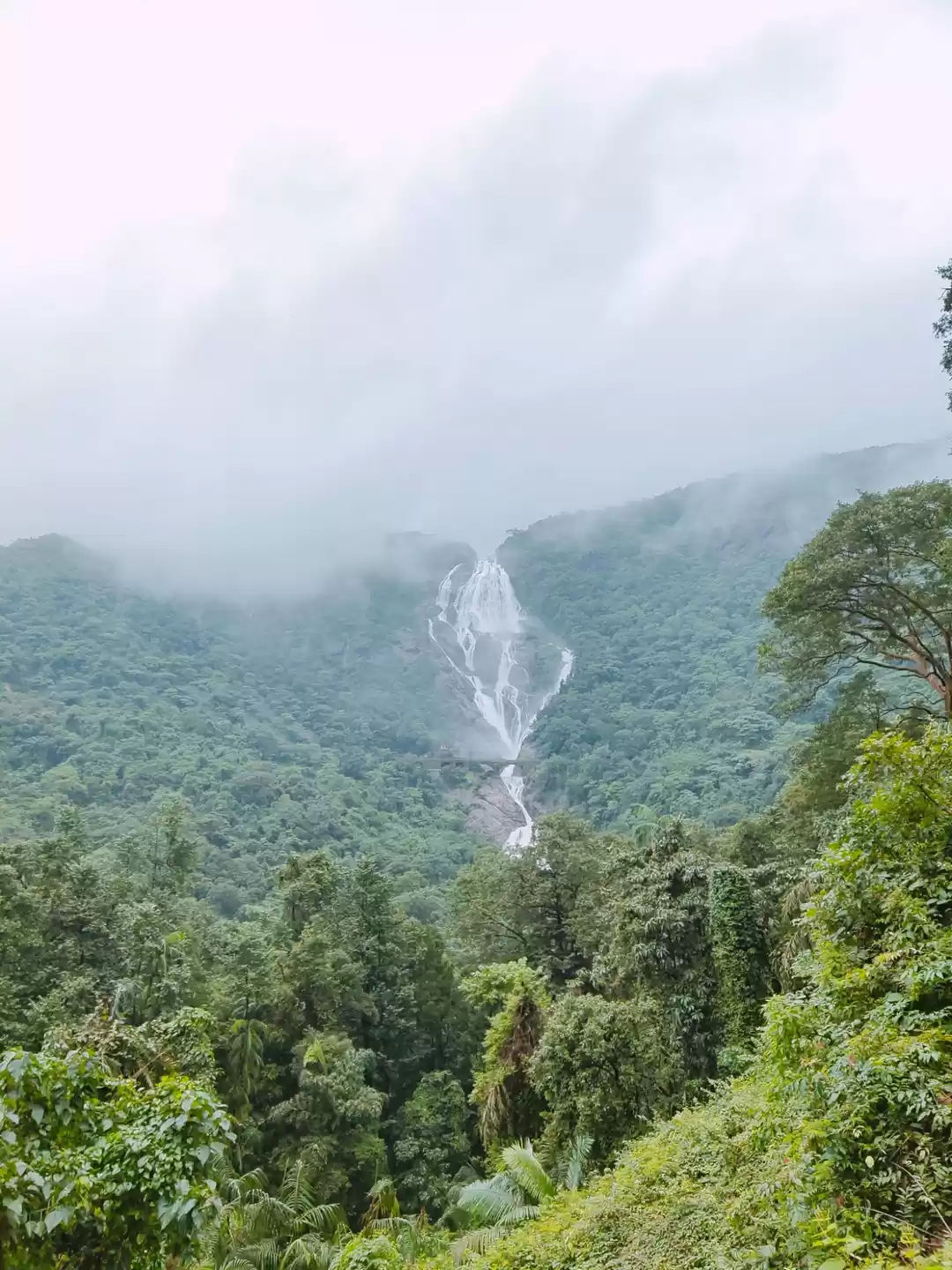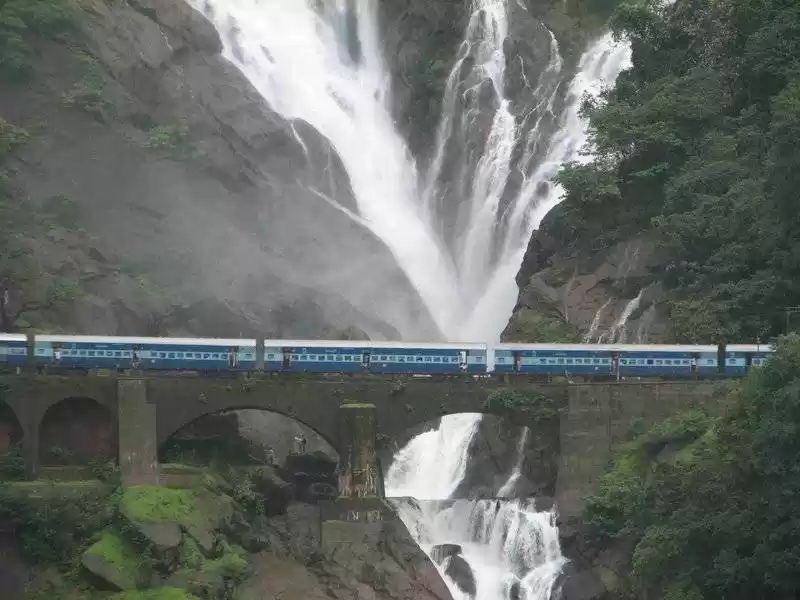The Dudhsagar Waterfalls, located high up on the Mandovi River’s watershed, remain quiet for most part of the year and spring to life during the rainy season. Beholding the gushing water leap from the edge of towering cliffs and cascade down the slippery worn out slope is a sobering experience. If one is lucky one can witness a train crawl on the viaduct framed against the rising spray of water emanating from the waterfall. A camping site sits a few yards from the viaduct; at night the pitter patter of rain and the thudding of the trains are a lullaby to the tired trekkers.
Along the railway track from Castle Rock to Kulem are three stations – Caranzol, Dudhsagar and Sonalium. They are buzzing with several railway staff and workers working tirelessly, often in pouring rain, to ensure that the track is viable for operations and all safety norms are met. From Sonalium one has the option of taking a dirt road through the woods that is also used by motorists coming from Kulem and heading to the fall. Several streams cross this dirt road and crossing them during the monsoons can be a bit tricky.
Apart from being a useful mode of transportation the Ghat section of the railway line also harks back to olden times. Buildings in varied states of disrepair are all that remains of the government apparatus that once stood here on the border of British India and Portuguese Goa. Moss and lichen have taken over lonely dilapidated structures along the railway track. The ruins at Castle Rock reminisce the days when weary travelers crossing the border lined up in the offices for immigration checks.
The Murmagao railway line never delivered the economic impetus it was designed for and Bombay continued to grow as the most favored port of ships arriving from Europe. But today the route is used extensively for transferring goods over the Ghats and this is evident at Castle Rock railway station where trains loaded with a variety of goods await their turn to indulge in a roller coaster ride over the hills.
For more than a hundred years trains have chugged along the Murmagao railway line and with the track now converted to broad gauge the traffic keeps on running. Passenger trains and goods carriages thunder on the clattering rails and the wail of their sirens echoes in the narrow valleys and the wooded hills. Breathing smoke and fire the engines lug the mass of metal up the slopes rushing past sheer drops, milky waterfalls, impatient streams and impenetrable forests.
Trekking along the railway track during the monsoons doesn't disappoint anyone seeking the ferocity of the monsoons and the explosion of greenery which accompanies it. Add to this the thrill of playing hide and seek with trains darting in and out of the tunnels and one is assured of a memorable adventure. The fog roams freely on the mountain tops and envelops the dense jungles that give birth to thundering streams tempting the onlooker for a quick dip. The main attraction of the trek is the Dudhsagar Waterfall accessible by a 14 km walk from Castle Rock or alternatively an 11km trek from Kulem.
Tackling the steep slopes, dense jungles, unbearable heat, incessant rains, diseases, landslides and wild animals that define the Western Ghats was an ambitious endeavor. The railway track was achieved by an amalgamation of the best of engineering expertise, machinery and skilled labourers toiling under inhospitable conditions. The majority of the workforce consisted of mainly South Asians who were involved in the daunting task of digging and moving earth and rock. At the peak of its construction there were around 16000 people, hailing from Afghanistan to Ceylon, employed in the Ghats.
The railway track was dotted with fourteen dark tunnels, seven lean bridges and five sturdy viaducts. The tunnels have been dug into the granite and schist hills and one can imagine the struggles of the workers labouring in the hot and rotten air of the claustrophobic tunnels fraught with the danger of collapsing. The viaducts over the Sanguem and Paroda rivers and the Dudhsagar Waterfalls are mentionable. The longest tunnel is the Tunnel No 2 (traveling from Castle Rock in Karnataka to Kulem in Goa) measuring 409.95m.

































